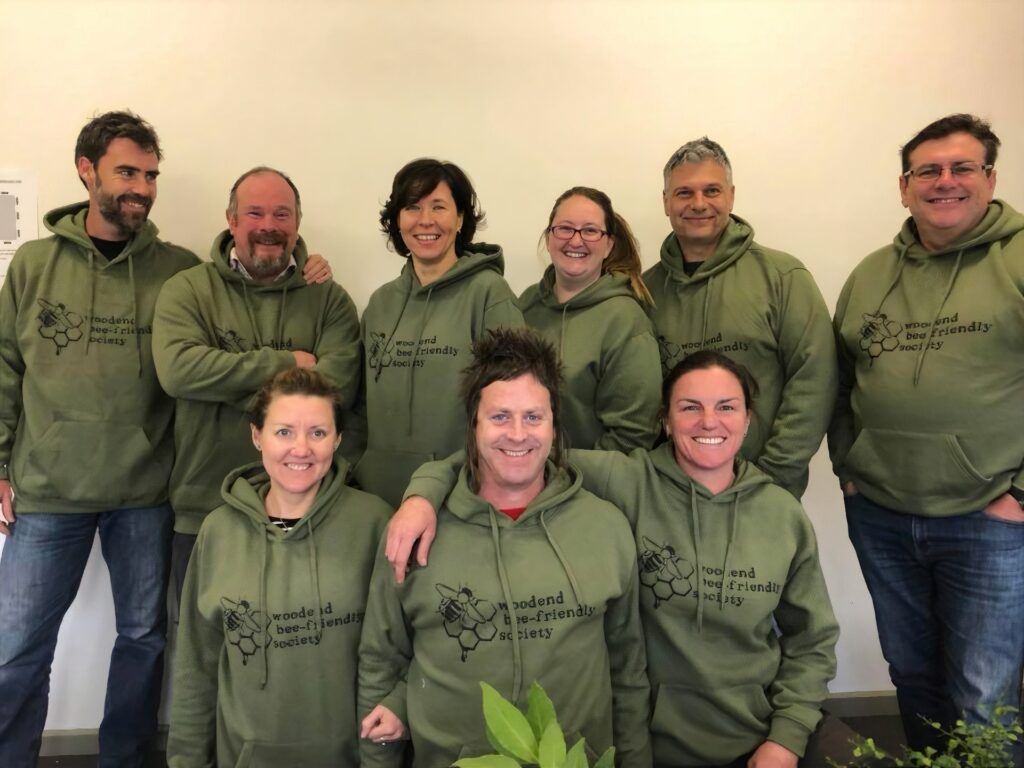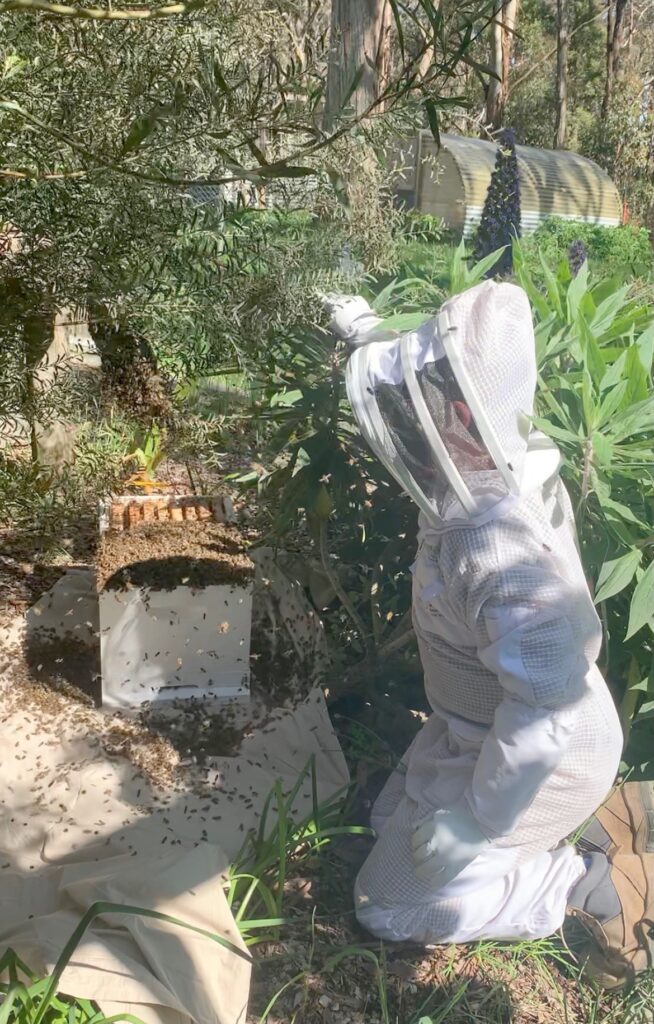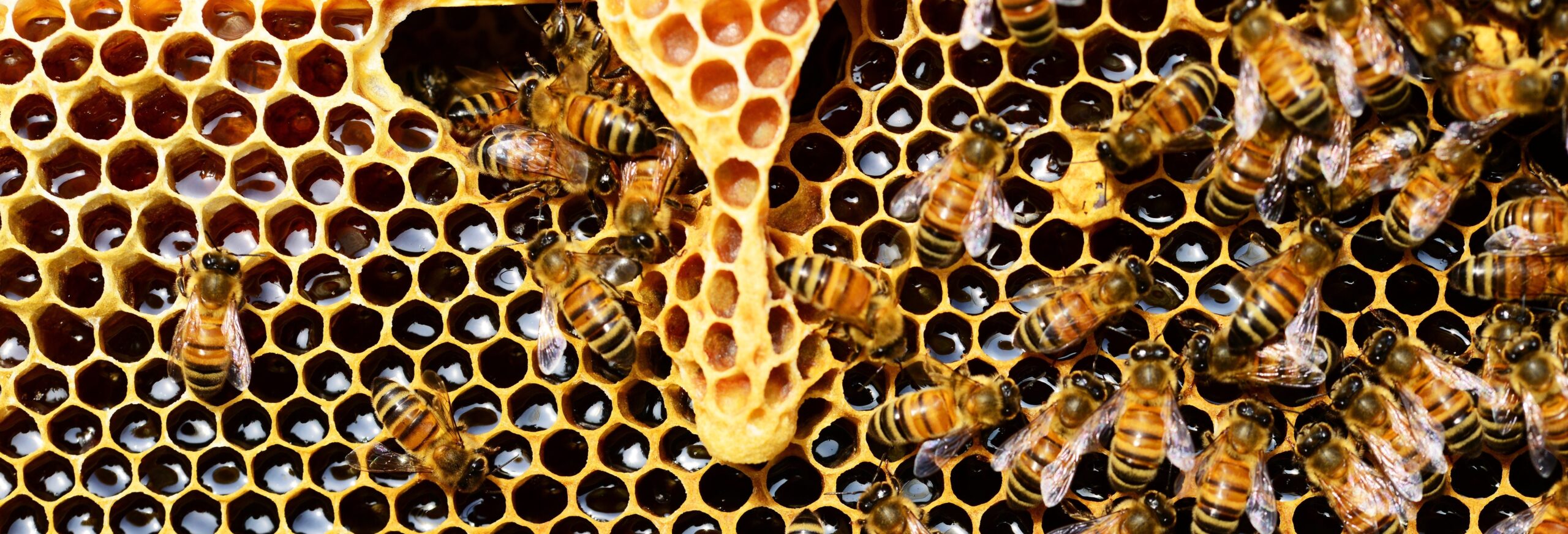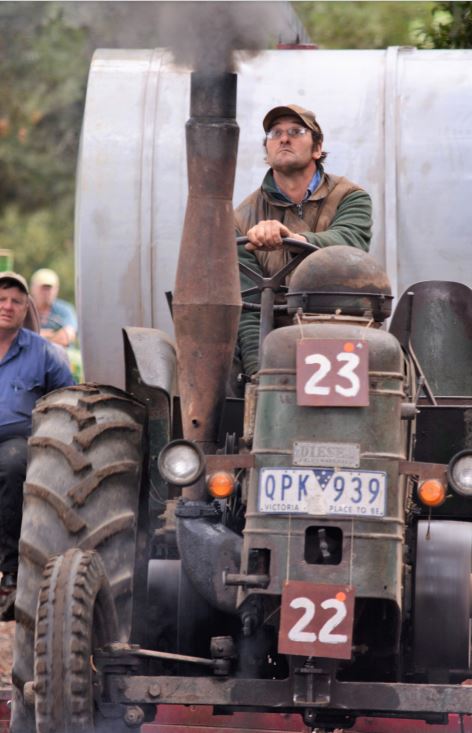November 29th, 2020To bee, or not to bee
It seems that every other day someone is left wondering how to deal with a mass of bees in their backyard. But there is a solution, and it is not calling in the pest control guy. Rather you can report a swarm on the Woodend Bee Friendly Society webpage.
“Its origins go back to 2014,” says spokesperson Matty Be. “My partner Samantha Rixon, and David Gormley-O’Brien, went down to the Diggers Rest Bee Club, sat through a few of the meetings and thought it may be a good idea to start up a local bee group in the Macedon Ranges. Unlike an association like Diggers Rest which was made up of established apiarists they decided to concentrate on backyard beekeeping and have an area of education for newcomers. They got 40 people at their first meeting.”

After a year or so the members decided to move underneath the umbrella of the Macedon Ranges Sustainability Group. Today, along with 11 others, they operate as an action group with the MRSG taking care of administration duties. That means the Woodend Bee Friendly Society can concentrate on all the fun stuff, which is keeping bees.
Normally they have a monthly meeting (outside of COVID) where members spend time talking about what is needed to keep bees for the month in advance. They also run designated beekeeping courses twice a year and do practical bee handling days. And, it should be noted, the society members are not commercial beekeepers. Typically they do not rob the bees of their honey, they are more concerned with bee health and wellbeing and limiting competition with native species.

Competition usually comes about during swarming season. A queen bee may make the decision to expand and find a new home which puts bees in competition with possums, bats, birds and other native fauna for suitable nesting sites.
But catching a swarm is a very easy and cheap way to get yourself a hive of bees. The society has a register of people interested in going out and catching a swarm. If a (presumably terrified) homeowner rings up ‘the report a swarm number’ on the Woodend Bee Friendly Society webpage, the Swarm Management and Allocation officer starts going down a list, making phone calls. The first person to answer goes out to collect.
But how in the world do you catch a swarm of bees?
“First of all you stay calm,” says Matty. “You lay a sheet out with a box under the swarm if possible, shake them if they are in a tree, and most of the bees will fall into the box. Then you close the lid up a little bit and the bees will usually decide this is better than where they were. Through the course of the day, all the rest will make their way into the dark box in an orderly procession called a bee march. Typically you wait until dark when you use the sheet on the ground to wrap the whole hive up and relocate it.”
So, no problem at all. In fact Matty, who has been working with bees for over six years, now looks after 10 hives, nine of which are from captured swarms. Seven of them are awaiting members to take ownership of them. Sometimes the delay is because bees, being bees, sting.
Matty agrees: “Being stung is a big changing point for some people in bee- keeping. It can change a lot of people and brings with it an understanding of the responsibility and occasional perils associated with looking after them.”
Group shot above,Woodend Bee Friendly Society leadership team, top row from left, Paul Green, David Gormley-O’Brien, Sally Scanlan, Shelly Andrews, Matthew Croatto and Nev Spiers, bottom row, Samantha Rixon, Matty Be and Emma Collins, Below, Matty Be
Words: Tony Sawrey | Images: Supplied










